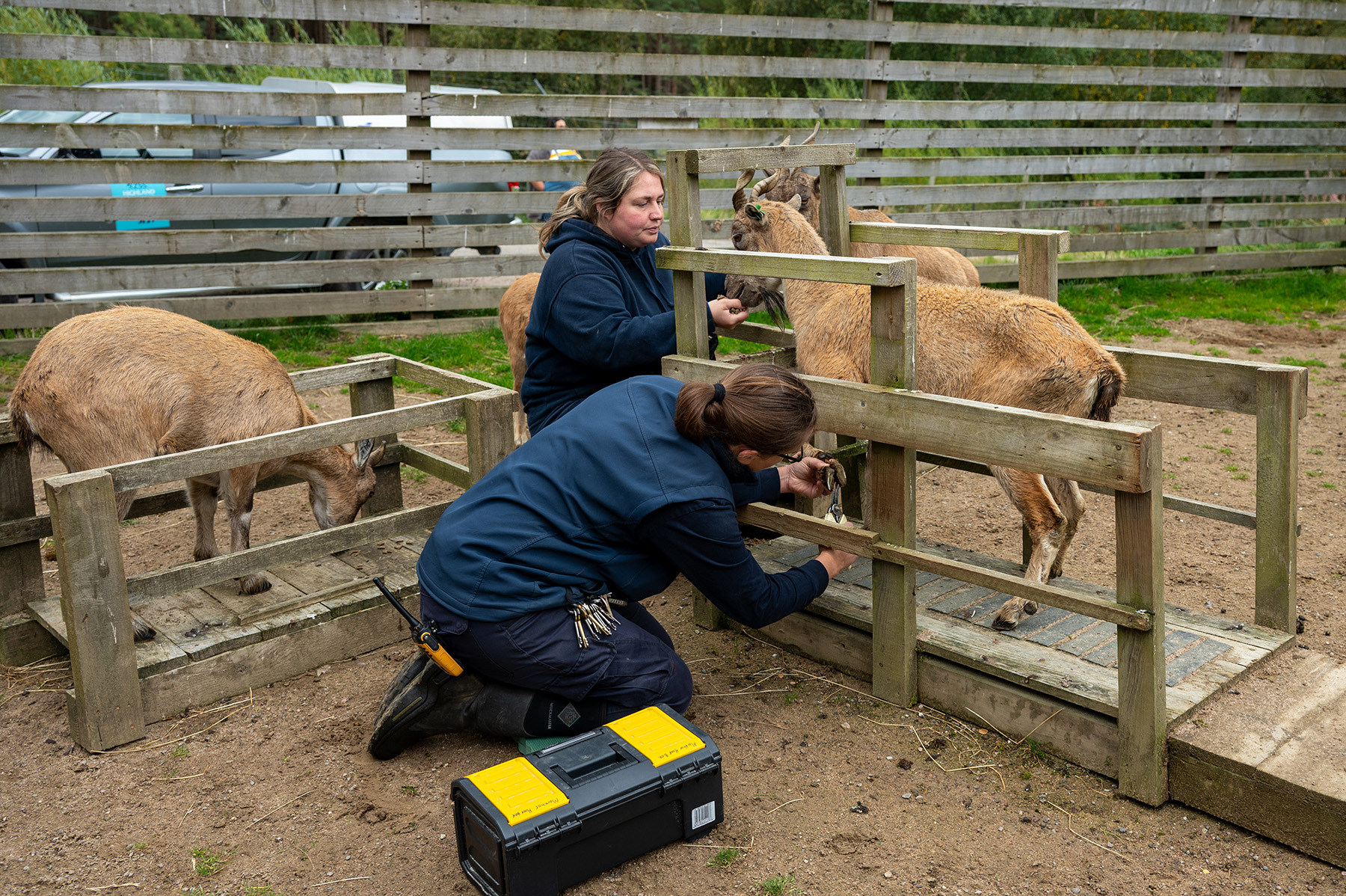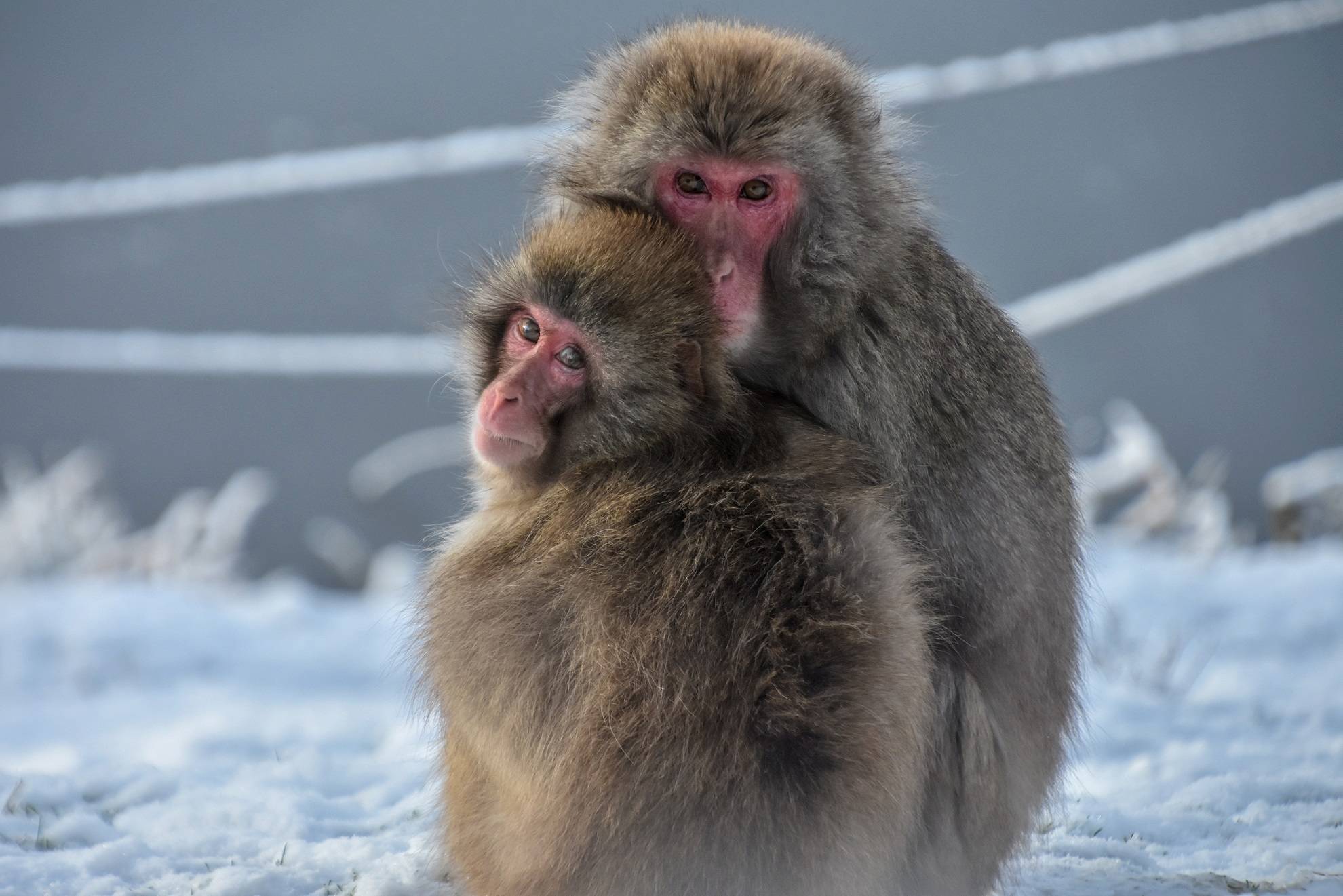Turkmenian markhor
Capra falconeri heptneri
![Turkmenian markhor sat on a hillside looking at the camera [eye contact] IMAGE: Amy Middleton 2023](https://images.rzss.org.uk/media/Highland_Wildlife_Park/HWP_animals/Turkmenian_markhor/turkmenian_markhor_1.jpg)
We have a large herd of Turkmenian markhor here at the park.
Markhor are the largest wild goat species, weighing up to 110 kilograms.
The most distinctive feature of this species is their impressive, corkscrew-shaped horns. They are also known for their ability to climb and jump, on account of their wide hooves and strong legs.
They are native to the mountainous regions of Western and Central Asia. They can live at high altitudes, and range across open woodlands, scrublands, and lightly forested areas.
It is estimated there are fewer than 2,500 markhor remaining in the wild. As well as being poached for the traditional medicine trade, markhor are also threatened by habitat loss.
Population
Increasing
Diet
Herbivore
Habitat
Mountains
Fact file
The horns of females can grow to around two feet, while the males’ horns grow to a significantly greater size, reaching up to five feet in length
Both sexes have fringed beards, though they are thicker, longer, and more distinct in males
They are herbivores, primarily grazing on grasses, leaves, and shoots. They can spend 12-14 hours a day foraging!
Males produce a strong, distinctive odor for scent marking and attracting mates
Latest news
View all news
16 Oct 2025
Three minute read
![Turkmenian markhor calf Iris looking back at camera [eye contact] [portrait] IMAGE: Amy Middleton 2023](https://images.rzss.org.uk/media/Highland_Wildlife_Park/HWP_animals/Turkmenian_markhor/turkmenian_markhor_3.jpg)
How we're helping
Like all the animals in our care, our markhor are amazing ambassadors for their relatives in the wild and help hundreds of thousands of people connect with nature every year. They encourage visitors to learn about the threats facing wildlife and the action they can take to help create a world where nature is protected, valued, and loved.
As a wildlife conservation charity, we care for the animals here at the zoo and work to protect species at risk around the world. From providing expertise in genetics and veterinary health to protecting wild places with local conservation partners, and even restoring threatened species to the wild, we are active where we are needed most.
Find out more about RZSS conservation
